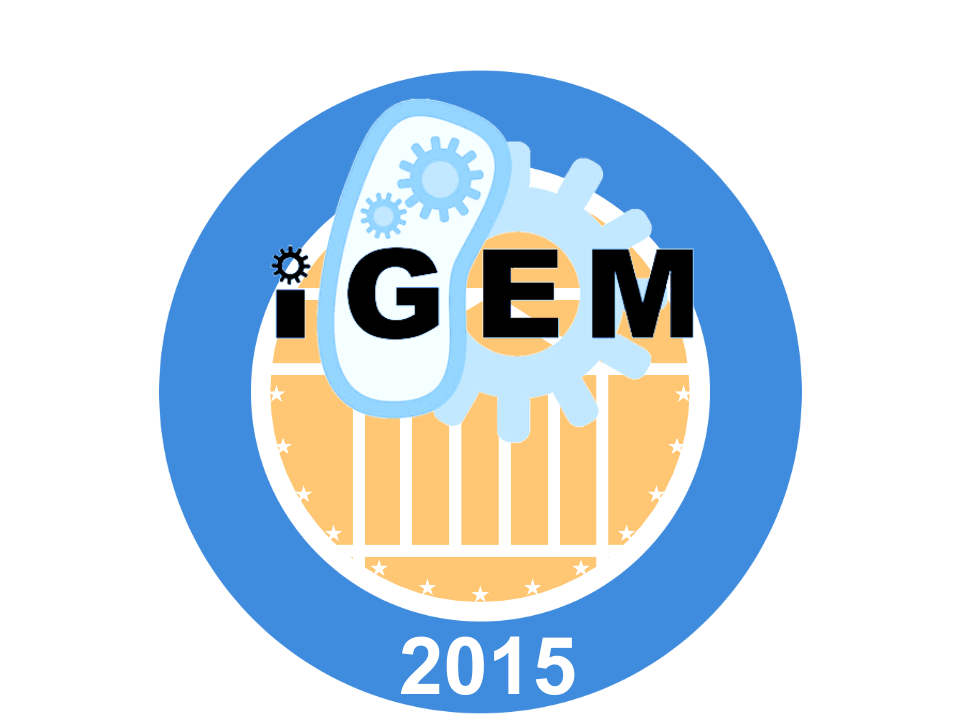Team:Virginia

iGEM 2015
Welcome the University of Virginia iGEM 2015 Wiki! Use the navigation bar at the top of every page to move between pages. Please let us know if you have any comments or questions about our project by visiting the “Contact Us” page.
(click to close)

House of Carbs
A Novel Solution to Minimizing Postprandial Hyperglycemic Spikes
Project Overview
The Problem: Diabetes Mellitus and Hyperglycemia
SHOW LESS
SHOW MORE
From diabetes mellitus a number of devastating complications, such as amputations, blindness, crippling neuropathies, and many others, can arise from increased blood sugar levels on a regular basis, but many of the major complications of diabetes arise from drastic fluctuations in the blood glucose level (Ceriello et al., 2012). Up to two-thirds of people with diabetes die of cardiovascular disease (CVD) brought about by diabetes-related macrovascular diseases (Deshpande et al. 2008). In fact, the risk for cardiovascular disease mortality is 2 to 4 times higher in people with diabetes than in people who do not have diabetes. Additionally, diabetic retinopathy is the most common microvascular complication among people with diabetes and results in more than 10,000 new cases of blindness per year. Retinopathy is associated with prolonged hyperglycemia; it is slow to develop, and there is some evidence that it can begin to develop as early as 7 years before clinical diagnosis of diabetes (Deshpande et al., 2008).
Postprandial (post-meal) blood sugar spikes specifically are one of the most damaging complications of diabetes (Parkin et al., 2002). Many diabetics are able to effectively manage post-meal glycemic spikes with self-administered doses of insulin, but these hyperglycemic incidents still kill more Americans per year than any other diabetes-related complications (Parkin et al., 2002). Arguably, the gravest consequence of glycemic spikes in diabetes patients is the development of progressive macrovascular disease (MVD), which affects the large blood vessels of the body, hardening and blocking these vessels (Ceriello et al., 2012). MVD is the leading cause of death among T2DM patients in the United States, causing up to 65% of diabetes-related deaths, making it a huge target for diabetes treatments research (Deshpande et al., 2008). MVD also frequently leads to other severe complications such as ischemia in the extremities and blindness (Haffner et al., 1998).
Controlling Hyperglycemic Spikes
SHOW LESS
SHOW MORE
For many T1DM and T2DM patients, it has been shown that the regular control and management of blood glucose levels prevents many of the vascular complications of the disease, but most of the time control over glucose is difficult to attain because the self-dosing insulin treatment system that a lot of moderately to severely sick diabetes patients use is often hard to calibrate and use (Parkin et al., 2002).
Compared to sucrose-rich food, starch-rich food has been found to create less fluctuation in blood glucose levels, and thus is beneficial to diabetes patients and hyperglycemia patients. There is evidence that this flatter response caused by a starch rich meal is associated with the slower rate of digestion of complex sugars versus simple sugars (Jenkins, Wolever, & Jenkins, 1988). Thus, if some of the simple sugars are first converted into complex saccharides inside the E. coli and then released back into small intestine, a similar flatter glycemic response will take place, which will be beneficial to the patients.
Our Devices
SHOW LESS
SHOW MORE
We have assembled one plasmid with genes that dictate a controllable level of simple sugars uptake and one plasmid to produce glucan and fructan from simple sugars and then lyse to release the complex sugars back into the environment. In essence, this microbial device runs on two genetic devices -- an uptake circuit and a polymerization circuit.
In order to learn more details, please visit the Project page.
References
A. Ceriello, S. Colagiuri, (2011). Guideline for management of postmeal glucose in diabetes. International Diabetes Federation Guideline Development Group, http://www.idf.org/sites/default/files/postmeal%20glucose%20guidelines.pdf , Accessed May. 6th, 2015
American Diabetes Association (2014). National Diabetes Statistics Report. http://www.cdc.gov/diabetes/pubs/statsreport14/national-diabetes-report-web.pdf Accessed May. 5th, 2015
Anal, A. K., & Singh, H. (2007). Recent advances in microencapsulation of probiotics for industrial applications and targeted delivery. Trends in Food Science & Technology, 18(5), 240–251. http://doi.org/10.1016/j.tifs.2007.01.004
Anan, F., Masaki, T., Eto, T., Fukunaga, N., Iwao, T., Kaneda, K., ... Yoshimatsu, H. (2008). Postchallenge Plasma Glucose and Glycemic Spikes Are Associated with Pulse Pressure in Patients with Impaired Glucose Tolerance and Essential Hypertension. Hypertension Research, 31(8), 1565–1571. http://doi.org/10.1291/hypres.31.1565
AHFS Consumer Medication Information [Internet]. Bethesda (MD): American Society of Health-System Pharmacists, Inc.; ©2008. Acarbose; [revised 2015 Feb. 15; reviewed 2015 Apr. 28; cited 2015 May. 3]; Available from: http://www.nlm.nih.gov/medlineplus/druginfo/meds/ a696015.html
AHFS Consumer Medication Information [Internet]. Bethesda (MD): American Society of Health-System Pharmacists, Inc.; ©2008. Pramlintide; [revised 2015 Feb. 15; reviewed 2015 Apr. 28; cited 2015 May. 3]; Available from: http://www.nlm.nih.gov/medlineplus/druginfo/meds/a605031.html
Banguela, A., Arrieta, J. G., Rodríguez, R., Trujillo, L. E., Menéndez, C., & Hernández, L. (2011). High levan accumulation in transgenic tobacco plants expressing the Gluconacetobacter diazotrophicus levansucrase gene. Journal of Biotechnology, 154(1), 93–98. http://doi.org/10.1016/j.jbiotec.2011.04.007
Barr EL, Zimmet PZ, Welborn TA et al. (2007). "Risk of cardiovascular and all-cause mortality in individuals with diabetes mellitus, impaired fasting glucose, and impaired glucose tolerance: the Australian Diabetes, Obesity, and Lifestyle Study (AusDiab)". Circulation 116 (2): 151–7.
Bernard, A. M., Anderson, L., Cook, C. B., & Phillips, L. S. (1999). What do internal medicine residents need to enhance their diabetes care? Diabetes Care, 22(5), 661–666. http://doi.org/10.2337/diacare.22.5.661
Boada C, Martínez-Moreno J. Pathophysiology of diabetes mellitus type 2: beyond the duo "insulin resistance-secretion deficit.". Nutricion Hospitalaria [serial online]. March 2, 2013;28:78-87. Available from: Fuente Académica, Ipswich, MA. Accessed April 16, 2015.
B. Göke, H. F. (1995). Voglibose (AO128) Is an Efficient α-Glucosidase Inhibitor and Mobilizes the Endogenous GLP-1 Reserve. Digestion, 56(6), 493–501. http://doi.org/10.1159/000201282
Brown, J. B., Harris, S. B., Webster-Bogaert, S., Wetmore, S., Faulds, C., & Stewart, M. (2002). The role of patient, physician and systemic factors in the management of type 2 diabetes mellitus. Family Practice, 19(4), 344–349. http://doi.org/10.1093/fampra/19.4.344
Butterworth, P. J., Warren, F. J., & Ellis, P. R. (2011). Human α-amylase and starch digestion: An interesting marriage. Starch - Stärke, 63(7), 395–405. http://doi.org/10.1002/star.201000150
Centers for Disease Control and Prevention. (2014). National Diabetes Statistics Report.
Chiasson, J.-L., Josse, R. G., Gomis, R., Hanefeld, M., Karasik, A., & Laakso, M. (2002). Acarbose for prevention of type 2 diabetes mellitus: the STOP-NIDDM randomised trial. The Lancet, 359(9323), 2072–2077. http://doi.org/10.1016/S0140-6736(02)08905-5
Chiasson, J.-L., Josse, R. G., Hunt, J. A., Palmason, C., Rodger, N. W., Ross, S. A., ... Wolever*, T. M. S. (1994). The Efficacy of Acarbose in the Treatment of Patients with Non–Insulin-Dependent Diabetes Mellitus: A Multicenter, Controlled Clinical Trial. Annals of Internal Medicine, 121(12), 928–935. http://doi.org/10.7326/0003-4819-121-12-199412150-00004 Crude and Age-Adjusted Rate per 100 of Civilian, Noninstitutionalized Population with Diagnosed Diabetes, United States, 1980–2011. (2014, September 5). Retrieved April 24, 2015, from http://www.cdc.gov/diabetes/statistics/prev/national/figage.htm
Dedonder, R. 1966. Levansucrase from Bacillus subtilis. Methods Enzymol. 8:500–505.
Deshpande, A. D., Harris-Hayes, M., & Schootman, M. (2008). Epidemiology of diabetes and diabetes-related complications. Physical therapy, 88(11), 1254-1264.
D.M. Nathan, P.A. Cleary, J.Y. Backlund, S.M. Genuth, J.M. Lachin, T.J. Orchard, et al., Intensive diabetes treatment and cardiovascular disease in patients with type 1 diabetes, N Engl J Med, 353 (2005), pp. 2643–2653
D.R. Whiting, L. Guariguata, C. Weil, J. Shaw, IDF diabetes atlas: global estimates of the prevalence of diabetes for 2011 and 2030 Diabetes Res Clin Pract, 94 (2011), pp. 311–321
Duncan, A. E. (2012). Hyperglycemia and Perioperative Glucose Management.Current Pharmaceutical Design, 18(38), 6195–6203.
Edelman, P. S., Maier, H., & Wilhelm, K. (2012). Pramlintide in the Treatment of Diabetes Mellitus. BioDrugs, 22(6), 375–386. http://doi.org/10.2165/0063030- 200822060-00004
Ferraris, R. P., Yasharpour, S. A. S. A. N., Lloyd, K. C., Mirzayan, R. A. F. F. Y., & Diamond, J. M. (1990). Luminal glucose concentrations in the gut under normal conditions. American Journal of Physiology-Gastrointestinal and Liver Physiology, 259(5), G822-G837.
Gay, P., Le Coq, D., Steinmetz, M., Ferrari, E., & Hoch, J. A. (1983). Cloning structural gene sacB, which codes for exoenzyme levansucrase of Bacillus subtilis: expression of the gene in Escherichia coli. Journal of bacteriology,153(3), 1424- 1431.
Gray, G. M., & Ingelfinger, F. J. (1966). Intestinal absorption of sucrose in man: interrelation of hydrolysis and monosaccharide product absorption. Journal of Clinical Investigation, 45(3), 388.
Grant, R. W., Buse, J. B., & Meigs, J. B. (2005). Quality of Diabetes Care in U.S. Academic Medical Centers Low rates of medical regimen change. Diabetes Care, 28(2), 337–442. http://doi.org/10.2337/diacare.28.2.337
Grant, R. W., Pirraglia, P. A., Meigs, J. B., & Singer, D. E. (2004). Trends in complexity of diabetes care in the United States from 1991 to 2000. Archives of Internal Medicine, 164(10), 1134–1139. http://doi.org/10.1001/archinte.164.10.1134
Halschou, K., Bukhave, K., & Rikardt, J. (2012). Intestinal Disaccharidase Activity and Uptake of Glucose from Sucrose. In S. Chackrewarthy (Ed.), Glucose Tolerance. InTech. Retrieved from http://www.intechopen.com/books/glucose- tolerance/intestinal-disaccharidase-activity-and-uptake-of-glucose-from-sucrose
Hanahan, D. (1983). Studies on transformation of Escherichia coli with plasmids. Journal of Molecular Biology, 166(4), 557–580.
Hoffmann, J., & Spengler, M. (1997). Efficacy of 24-Week Monotherapy With Acarbose, Metformin, or Placebo in Dietary-Treated NIDDM Patients: The Essen-II Study. The American Journal of Medicine, 103(6), 483–490. http://doi.org/10.1016/S0002-9343(97)00252-0 Intensive blood-glucose control with sulphonylureas or insulin compared with conventional treatment and risk of complications in patients with type 2 diabetes (UKPDS 33). UK Prospective Diabetes Study (UKPDS) Group.
Jenkins, D. J. A., Wolever, T. M. S., & Jenkins, A. L. (1988). Starchy Foods and Glycemic Index. Diabetes Care, 11(2), 149–159. http://doi.org/10.2337/diacare.11.2.149
Jones, M. C. (2007). Therapies for diabetes: pramlintide and exenatide. American Family Physician, 75(12), 1831–1835.
J Reizer, S. L. S. (1992). Functional interactions between proteins of the phosphoenolpyruvate:sugar phosphotransferase systems of Bacillus subtilis and Escherichia coli. The Journal of Biological Chemistry, 267(13), 9158–69. Jenkins, D. J., Wolever, T. M., & Jenkins, A. L. (1988). Starchy foods and glycemic index. Diabetes care, 11(2), 149-159.
Kumar, Vinay; Fausto, Nelson; Abbas, Abul K.; Cotran, Ramzi S. ; Robbins, Stanley L. (2005). Robbins and Cotran Pathologic Basis of Disease (7th ed.). Philadelphia, Pa.: Saunders. pp. 1194–1195. ISBN 0-7216-0187-1. Lancet. 1998 Sep 12; 352(9131):837-53.
Kundig, W., Ghosh, S., & Roseman, S. (1964). PHOSPHATE BOUND TO HISTIDINE IN A PROTEIN AS AN INTERMEDIATE IN A NOVEL PHOSPHO- TRANSFERASE SYSTEM. Proceedings of the National Academy of Sciences of the United States of America, 52, 1067–1074.
Lebovitz, H. E. (1997). ALPHA-GLUCOSIDASE INHIBITORS. Endocrinology and Metabolism Clinics of North America, 26(3), 539–551. http://doi.org/10.1016/S0889-8529(05)70266-8
Lourens-Hattingh, A., & Viljoen, B. C. (2001). Yogurt as probiotic carrier food. International Dairy Journal, 11(1–2), 1–17. http://doi.org/10.1016/S0958- 6946(01)00036-X
Malagelada, J. R., Bazzoli, F., Elewaut, A., Fried, M., Krabshuis, J. H., Lindberg, G., ... Vakil, N. (2007). World Gastroenterology Organisation Practice Guidelines. Dysphagia. Retrieved from http://almacen- gpc.dynalias.org/publico/Dysphagia%20WGO%202004%20Ingles.pdf
Man, C. D., Camilleri, M., & Cobelli, C. (2006). A System Model of Oral Glucose Absorption: Validation on Gold Standard Data. IEEE Transactions on Biomedical Engineering, 53(12), 2472–2478. http://doi.org/10.1109/TBME.2006.883792
Meigs, J. B., Nathan, D. M., Wilson, P. W., Cupples, L. A., & Singer, D. E. (1998). Metabolic risk factors worsen continuously across the spectrum of nondiabetic glucose tolerance. The Framingham Offspring Study. Annals of Internal Medicine, 128(7), 524–533.
Narimasa, S., Tatsuo, H., Mitsutaka, Y., & Toshio, I. (1979). Action of human pancreatic and salivary α-amylases on maltooligosaccharides: Evaluation of kinetic parameters. Clinica Chimica Acta, 97(2–3), 253–260. http://doi.org/10.1016/0009-8981(79)90423-6
National Diabetes Data Group. (1979). Classification and Diagnosis of Diabetes Mellitus and Other Categories of Glucose Intolerance. Diabetes, 28(12), 1039–1057. http://doi.org/10.2337/diab.28.12.1039
Nissle, A. (1959). [Explanations of the significance of colonic dysbacteria & the mechanism of action of E. coli therapy (mutaflor)]. Die Medizinische, 4(21), 1017–1022.
Parkin, C. G., & Brooks, N. (2002). Is postprandial glucose control important? Is it practical in primary care settings?. Clinical Diabetes, 20(2), 71-76.
Patterson, Joan (2013). Many Schools Cutting Back on Physical Education. Las Vegas Review - Journal. Prevalence of diabetes, impaired fasting glucose, and impaired glucose tolerance in U.S. adults. The Third National Health and Nutrition Examination Survey, 1988-1994.
Peng, C.-K., Buldyrev, S. V., Havlin, S., Simons, M., Stanley, H. E., & Goldberger, A. L. (1994). Mosaic organization of DNA nucleotides. Physical Review E, 49(2), 1685–1689. http://doi.org/10.1103/PhysRevE.49.1685
Rathmann, W., & Giani, G. (2004). Global Prevalence of Diabetes: Estimates for the Year 2000 and Projections for 2030: Response to Wild et al. Diabetes Care, 2568- 2569.
Recorbet, G. H. I. S. L. A. I. N. E., Robert, C., Givaudan, A., Kudla, B., Normand, P., & Faurie, G. (1993). Conditional suicide system of Escherichia coli released into soil that uses the Bacillus subtilis sacB gene. Applied and environmental microbiology, 59(5), 1361-1366.
Ried, J. L., and A. Collmer. 1987. An nptI-sacB-sacR cartridge for constructing directed, unmarked mutations in Gram-negative bacteria by marker exchange-eviction mutagenesis. Gene 57:239–246.
Riddle, M., Frias, J., Zhang, B., Maier, H., Brown, C., Lutz, K., & Kolterman, O. (2007). Pramlintide Improved Glycemic Control and Reduced Weight in Patients With Type 2 Diabetes Using Basal Insulin. Diabetes Care, 30(11), 2794–2799. http://doi.org/10.2337/dc07-0589
Saydah, S. H., Miret, M., Sung, J., Varas, C., Gause, D., & Brancati, F. L. (2001). Postchallenge Hyperglycemia and Mortality in a National Sample of U.S. Adults. Diabetes Care, 24(8), 1397–1402. http://doi.org/10.2337/diacare.24.8.1397
Snelling, Anatasia; Korba, Casey; Burkey, Alyvia (2007). The National School Lunch and Competitive Food Offerings and Purchasing Behaviors of High School Students, 77(10), 701-705.
Sonnenborn, Ulrich; Schulze, Jurgen. 2009. The Non-Pathogenic Escherichia coli strain Nissle 1917 - Features of a Versatile Probiotic. Microbial Ecology in Health and Disease, (21), 122-158.
S.M. Haffner, S. Lehto, T. Ronnemaa, K. Pyorala, M. Laakso, Mortality from coronary heart disease in subjects with type 2 diabetes and in nondiabetic subjects with and without prior myocardial infarction, N Engl J Med, 339 (1998), pp. 229–234
Schultz, M. (2008). Clinical use of E. coli Nissle 1917 in inflammatory bowel disease. Inflammatory Bowel Diseases, 14(7), 1012–1018. http://doi.org/10.1002/ibd.20377
Seifter, S., & Dayton, S. (1950). The estimation of glycogen with the anthrone reagent. Archives of Biochemistry, 25(1), 191–200.
Shulman, N. B., Martinez, B., Brogan, D., Carr, A. A., & Miles, C. G. (1986). Financial cost as an obstacle to hypertension therapy. American Journal of Public Health, 76(9), 1105–1108.
Suwattee, P., Lynch, J. C., & Pendergrass, M. L. (2003). Quality of Care for Diabetic Patients in a Large Urban Public Hospital. Diabetes Care, 26(3), 563–568. http://doi.org/10.2337/diacare.26.3.563
Temelkova-Kurktschiev, T. S., Koehler, C., Henkel, E., Leonhardt, W., Fuecker, K., & Hanefeld, M. (2000). Postchallenge plasma glucose and glycemic spikes are more strongly associated with atherosclerosis than fasting glucose or HbA1c level.
Diabetes Care, 23(12), 1830–1834. http://doi.org/10.2337/diacare.23.12.1830 What are normal blood glucose levels? Retrieved from Virginia Mason Medical Center website: https://www.virginiamason.org/whatarenormalbloodglucoselevels. Accessed: May. 5th ,2015


